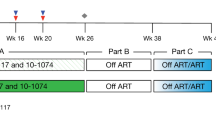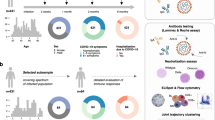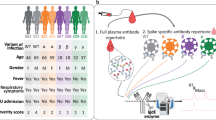Abstract
Oral administration of human serum immunoglobulin reduces the duration of diarrhea and of rotaviral excretion in children. To investigate the in vitro effects of immunoglobulin on virusenterocyte interaction, Caco-2 cells were infected with Rotavirus strain SA11. Immunoglobulin was added prior to and at various times postinfection. Indirect immunofluorescence was performed with an antibody against VP-6 rotaviral antigen. Cell viability and monolayer transepithelial electrical resistance (TEER) were monitored. Immunofluorescence showed a perinuclear distribution in 90% of cells.Rotavirus infection induced a progressive decrease in TEER and a parallel reduction in cell viability, depending on viral load. Preincubation of the virus with immunoglobulin prevented cell infection as judged by immunofluorescence. Immunoglobulin addition to infected cells partially prevented the decrease in TEER and induced a later shift of TEER toward increasing values, suggesting restoration of monolayer's integrity. The efficacy of immunoglobulin depended on its concentration and on the time of its addition. These results indicate that immunoglobulin is effective in preventing infection and in reducing cell damage, through a direct anti-Rotavirus action and may indicate that immunoglobulin should be administered in the early phase of diarrhea, to reduce the severity ofRotavirus infection.
Similar content being viewed by others
Log in or create a free account to read this content
Gain free access to this article, as well as selected content from this journal and more on nature.com
or
Abbreviations
- TEER:
-
transepithelial electrical resistance
- p.i.:
-
postinfection
- DMEM:
-
Dulbecco's modified Eagle's medium
- PFU:
-
plaque-forming unit
REFERENCES
Cukor G, Blacklow NR 1984 Human viral gastroenteritis. Microbiol Rev 48: 157–179
Guarino A, Guandalini S, Albano F, Mascia A, de Ritis G, Rubino A 1991 Enteral immunoglobulins for treatment of protracted rotaviral diarrhea. Pediatr Infect Dis J 10: 612–614
Guarino A, Berni Canani R, Russo S, Albano F, Berni Canani M, Ruggieri FM, Donelli G, Rubino A 1994 Oral immunoglobulins for treatment of acute rotaviral gastroenteritis. Pediatrics 93: 12–16
Svensson L, Finlay BB, Buss D, von Bonsdorff CH, Greenberg HB 1991 Symmetric infection of Rotavirus on polarized human intestinal epithelial (Caco-2) cells. J Virol 65: 4190–97
Fogh J, Fogh JM, Orfeo T 1977 One hundred and twenty seven cultured human tumor cell lines producing tumors in nude mice. J Natl Cancer Inst 59: 221–226
Grasset E, Pinto M, Dussaulx E, Zweibaum E, Desjeux JF 1984 Epithelial properties of human colonic carcinoma cell line Caco-2: electrical parameters. Am J Physiol 247: 260–268
Pinto M, Robine-Leon S, Appay MD, Kedinger M, Triadou N, Dussaulx E, Lacroix B, Simon-Assmann P, Haffen K, Fogh J, Zweibaum E 1983 Enterocyte-like differentiation and polarization of the human colon carcinoma cell line Caco-2 in culture. Biol Cell 47: 323–330
Guarino A, Berni Canani R, Casola A, Pozio E, Russo R, Bruzzese E, Fontana M, Rubino A 1995 Human intestinal cryptosporidiosis: secretory diarrhea and enterotoxic activity in Caco-2 cells. J Infect Dis 171: 976–983
Estes MK, Graham DY, Gerba CP, Smith EM 1979 Simian Rotavirus SA11 replication in cell cultures. J Virol 31: 810–815
Kitamoto N, Ramig RF, Matson DO, Estes MK 1991 Comparative growth of different Rotavirus strains in different cells (MA 104, Hep G2, Caco-2). Virology 184: 729–737
Wyatt RG, Greenberg HB, James WD, Pittman AL, Kalica AP, Flores J, Chanock RM, Kapikian A 1882 Definition of human Rotavirus by plaque reduction assay. Infect Immun 37: 110–115
Kaljot KT, Shaw RD, Rubin DH, Greenberg HB 1988 Infectious Rotavirus enters cells by direct cell membrane penetration, not by endocytosis. J Virol 62: 1136–1144
Finter NB 1969 Dye uptake methods for assessing viral cytopathogenicity and their application to interferon assays. J Gen Virol 5: 419–427
Capano G, Guandalini S, Guarino A, Caprioli A, Falbo V, Giraldi V, Ruggieri FM, Vairano P, Vegnente A, Vairo U, Rubino A 1984 Enteric infections, cow's milk intolerance and parenteral infections in 118 consecutive cases of acute diarrhoea in children. Eur J Pediatr 142: 281–285
Yolken RH, Wyatt RG, Zissis G, Brandt CD, Rodriguez WJ, Kim HV, Parrot RM, Greemberg HB, Kapikian AZ, Chanock RM 1978 Epidemiology of human Rotavirus types 1 and 2 as studied by enzyme linked immunosorbent assay. N Engl J Med 299: 1156
Wenman WM, Hinde D, Felthan S, Gurwith M 1979 Rotavirus infections in adults: results of a prospective family study. N Engl J Med 301: 303–306
Offit PA, Clark HF 1985 Protection against Rotavirus-induced gastroenteritis in a murine model by passively acquired gastrointestinal but not circulating antibodies. J Virol 54: 58–64
Coulson BS, Grimwood K, Hudson IL, Barnes GL, Bishop RF 1992 Role of coproantibody in clinical protection of children during reinfection with Rotavirus. J Clin Microbiol 30: 1678–84
Matson DO, O'Ryan ML, Herrera I, Pickering LK, Estes MK 1993 Fecal antibody responses to symptomatic and asymptomatic Rotavirus infections. J Infect Dis 167: 577–583
Weinberg RJ, Tipton G, Klish WJ, Brown MR 1984 Effect of brest-feeding on morbidity in Rotavirus gastroenteritis. Pediatrics 74: 250–253
Offit PA, Shaw RD, Greenberg HB 1986 Passive protection against Rotavirus-induced diarrhea by monoclonal antibodies to surface proteins VP3 and VP7. J Virol 58: 700–703
Matsui SM, Offit PA, PT Vo, Mackower Benfield DA, Shaw RD, Padilla-Noriega L, Greenberg HB 1989 Passive protection against Rotavirus-induced diarrhea by monoclonal antibodies to the heterotypic neutralization domain of VP7 and VP8 fragment of VP4. J Clin Microbiol 27: 780–782
Schaller JP, Saif LJ, Cordle CT, Candler E, Winship TR 1992 Prevention of human rotavirus-induced diarrhea in gnotobiotic piglets using bovine antibody. J Infect Dis 65: 623–630
Lecce JG, Leary HL, Clare DA, Batema RP 1991 Protection of agammaglobulinemic piglets from porcine rotavirus infection by antibody against Rotavirus SA-11. J Clin Microbiol 29: 1382–86
Barnes GL, Doyle LW, Hewson PH, Knoches AML, Mc Lellan JA, Kitchen VH, Bishop RF 1982 A randomized trial of oral gammaglobulin in low-birth-weight infants infected with rotavirus. Lancet 2: 1371–73
Brussow H, Hilpert H, Walther I, Sidoti J, Mietens C, Bachman P 1987 Bovine milk immunoglobulins for passive immunity to infantile rotavirus gastroenteritis. J Clin Microbiol 25: 982–986
Matsui SM, Mackow ER, Greenberg HB 1989 The molecular determinants of rotavirus neutralization and protection. Adv Virus Res 36: 181–214
Sabara M, Babuik LA 1984 Identification of a bovine rotavirus gene and gene product influencing cell attachment. J Virol 51: 489–496
Fukuhara N, Yashie O, Kitaoka S, and Konno T 1988 Role of VP3 in human rotavirus internalization after target cell attachment via VP7. J Virol 62: 2209–2218
Offit PA, Shaw RD, Greenberg HB 1986 Passive protection against Rotavirus-induced diarrhea by monoclonal antibodies to surface proteins VP3 and VP7. J Virol 58: 700–703
Ward RL, McNeal MM, Sander DS, Greenberg HB, Bernstein DI 1993 Immunodominance of the VP4 neutralization protein of Rotavirus in protective natural infections of young children. J Virol 67: 464–468
Offit PA, Blavat G, Greenberg HB, Clark HF 1986 Molecular basis of rotavirus virulence: role of gene segment 4. J Virol 57: 46–49
Mazanec M, Coudret LC, Fletcher DR 1995 Intracellular neutralization of influenza virus by IgA anti-hemoagglutinin monoclonal antibodies. J Virol 69: 1339–1343
Burns JW, Siadat-Pajouh M, Krishnaney AA, Greenberg HB 1996 Protective effect of Rotavirus VP-6-specific IgA monoclonal antibodies that lack neutralizing activity. Science 272: 104–107
Bass DM, Baylor M, Broome M, Greenberg HB 1992 Molecular basis of age-dependent inactivation of rhesus Rotavirus in the mouse. J Clin Invest 89: 1741–1745
Rolsma MD, Gelberg HB, Kuhlenschmidt MS 1994 Assay for evaluation of Rotavirus-cell interactions: identifications of an enterocyte ganglioside fraction that mediates group A porcine rotavirus recognition. J Virol 68: 258–268
Author information
Authors and Affiliations
Additional information
Supported by a grant from Ministero della Sanità, AIDS project 9305-35.
Part of this work has been presented at the joint meeting of the North American and European Societies of Pediatric Gastroenterology and Nutrition, in Houston in October 1994.
Rights and permissions
About this article
Cite this article
Guarino, A., Casola, A., Bruzzese, E. et al. Human Serum Immunoglobulin Counteracts Rotaviral Infection in Caco-2 Cells. Pediatr Res 40, 881–887 (1996). https://doi.org/10.1203/00006450-199612000-00019
Received:
Accepted:
Issue date:
DOI: https://doi.org/10.1203/00006450-199612000-00019
This article is cited by
-
Detection and evaluation of rotavirus surveillance methods as viral indicator in the aquatic environments
Brazilian Journal of Microbiology (2021)



